Physician Advising COM-Unity Program
Intro Heading link
The vision of the COM-Unity Advising structure is to create a sense of “belonging in medicine” for each student by fostering relationships that support students’ professional and personal development during medical school.
There are 8 COM-Unities which are named for famous UI College of Medicine Alumni and former faculty. Each COM-Unity has four houses, with each house comprised of students from a different entering class. There are two physician house advisors (PHAs) per COM-Unity. Our PHAs represent six different specialties; six PHAs are UI COM Alumni, and twelve did some portion of their training at UIC/UI Health.
The PHA works with the students in a longitudinal fashion, creating long-term meaningful relationships. In close collaboration with the Office of Student Affairs, the PHA performs three major functions: individually advising and coaching each student in their house, facilitating small groups for the curriculum, and checking in with the students in their house approximately monthly.
Goals of COM-Unity Programs Heading link
The goals of the COM-Unity programs are as follows:
- Students will be able to name a trusted physician faculty member at COM who can offer advice, coaching and support without any risk of effect on students’ grades or evaluations
- Students will learn to actively listen and effectively share information with peers in small groups, to enhance the knowledge, skills and attitudes of the group
- To show respect for divergent opinions
- To demonstrate cultural humility
- Students will practice self-reflection and self-assessment in order to:
- Identify and discuss strengths within medicine
- Identify areas for improvement within medicine and plan a path to this improvement
- Welcome feedback and incorporate it into daily practice
- Students will discuss areas of interest within medicine and plan a path to pursue these interests
Physician House Advising Faculty for: Heading link
-
Dr. Sarah Messmer

Dr. Sarah Messmer is an assistant professor of internal medicine and pediatrics and splits her time between the two departments. She is originally from the suburbs of Chicago and is happy to be back after completing her medical school training at Harvard and med-peds residency at Massachusetts General Hospital. Dr. Messmer’s clinical interests include LGBTQIA+ affirming care, refugee and immigrant health, and opioid use disorder. She enjoys spending time outdoors with her wife and four children.
Dr. Mahesh Patel

Dr. Patel was born in India and came to the US when he was 1 1/2 yrs. old. He grew up in the Skokie-Evanston area and went to high school in Evanston, where he currently lives. After attending UC-Berkeley for undergrad, he made his way to The Ohio State University for medical school. He then went on to do a residency in combined internal medicine and pediatrics at Indiana University. After residency, he moved to NY City to do a 4-year translational research fellowship in infectious diseases at the Albert Einstein College of Medicine/Montefiore medical center. After fellowship, he stayed in NYC and worked at Jacobi Medical Center (a city hospital in the Bronx). He decided to move back home with his family in 2010 and started working at UIC in August of that year. His primary clinical interests include HIV medicine and tuberculosis. He has been active with UIC’s medical school curriculum since 2012 as an instructor of microbiology and more recently as a Phase I Block lead. He enjoys spending his free time with his family and friends, playing cards, and riding his motorcycle.
Dr. Felicia Scott-Wellington

Dr. Felicia Scott-Wellington is a double board certified Pediatric and Adolescent Medicine Physician. She completed both her medical school and residency training in Chicago and went on to complete a fellowship in Adolescent Medicine in Los Angeles. Dr. Scott-Wellington returned to Chicago in 2017 where she joined the University of Illinois at Chicago Division of Adolescent and Young Adult Medicine. Dr. Scott-Wellington is an Assistant Professor of Clinical Pediatrics and the Co-Director of the Department of Pediatrics Diversity Equity and Inclusion Task Force . Dr. Scott-Wellington cares for patients ages 12 -25 years old and works to educate physicians, community partners, and patients on evidence based best practices. Her goal is to help decrease adolescent health disparities; particularly those that plaque her city. Dr. Scott- Wellington has been an invited lecturer to graduate students, medical students, residents, and fellows. She was named on the UIC Pediatric Faculty Teaching Honor Roll for three consecutive years. She has mentored students through her role in the UIC Urban Health Program where she serves at the Pediatric Faculty Lead and enjoys teaching, lecturing, and mentoring trainees whenever possible.
-
Dr. Michael Charles
Dr. Michael Charles is an Assistant Professor in the Departments of Medicine and Pediatrics. As an undergraduate, he studied Human Nutrition and Chemistry at the University of Illinois at Urbana-Champaign. He went on to complete both medical school and Med-Peds residency training at UIC. Dr. Charles is passionate about promoting healthy lifestyle habits and enjoys the management of complex health issues in his primary care clinics. He precepts residents in the Internal Medicine and Pediatric clinics as well as on the medicine wards.
Outside of UIC, Dr. Charles spends a lot of time with his wife, and his sisters. He likes learning new languages, in fact, he speaks 4 of them. He frequently dreams about being a professional soccer player. Every year, he plays at the intramural soccer league with medical students, residents, and other attendings.
Dr. Rachael King
Dr. Rachael King is an Assistant Professor in the Department of Medicine at UIC. She is originally from Florida, completing her undergraduate degree at the University of Florida (go Gators!) with a bachelors of science in psychology and a minor in anthropology. She completed medical school at the University of South Florida Morsani College of Medicine with a distinction in health disparities. Needing to leave the heat, she came to Chicago to complete her residency and chief year in internal medicine at UIC. She has an interest in underserved medicine, women’s health and recruitment of underrepresented minorities into medicine. She also has a love of cooking, traveling, and is a big fan of the Harry Potter book series.
-
Dr. Marci Laragh

Dr. Marci Laragh has been a Clinical Associate Professor of Internal Medicine and academic Hospitalist at the Jesse Brown VA Medical Center since 2013 after completing medical school at New York University (NYU) and Internal Medicine Residency and Chief Residency at UIC. Her research and advocacy interests include anti-racism, quality improvement, interesting clinical case reports, and medical education with a focus on bedside teaching and formative feedback. She is an active member of the Jesse Brown for Black Lives (JB4BL) clinical committee, whose mission is to advance anti-racist education and practices at the VA. One of the most rewarding part of her career is her involvement with clinical education and mentorship. She serves at the UIC Internal Medicine Clinical Clerkship co-director at the Jesse Brown VAMC and as core teaching faculty in the UIC Internal Medicine residency program.
Dr. Gina Walton
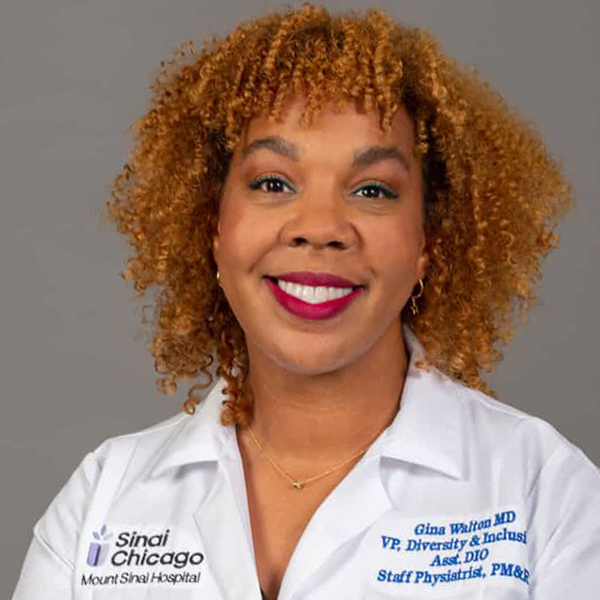
Dr. Walton is a graduate of the UICOM and serves as the VP of Medical Diversity & Inclusion and the Associate Designated Institutional Official for Graduate Medical Education for Sinai Chicago. Dr. Walton is a physiatrist and serves her community through her outpatient Physical Medicine & Rehabilitation clinic at Schwab Rehabilitation Hospital at Sinai Chicago. Additionally, Dr. Walton is responsible for assisting in the support and accreditation of the five residency programs sponsored by Sinai Chicago. Dr. Walton’s pronouns are she/her/ella. Dr. Walton is passionate about improving patient health outcomes through recruitment aimed at increasing physician-patient concordance to ensure that the community is being served by talented clinicians that are equally passionate about serving underserved populations. By building on her experience as an advocate for African American and Hispanic communities in Chicago, Dr. Walton continues to expand her knowledge and seek opportunities to grow her advocacy and support for the LGBTQ+ community, as well. Dr. Walton has extensive experience in coaching and mentoring and is fulfilled by empowering her family, friends, patients, and students with support and tools that help them better participate in their health, growth, and development.
-
Dr. Kelsie Avants
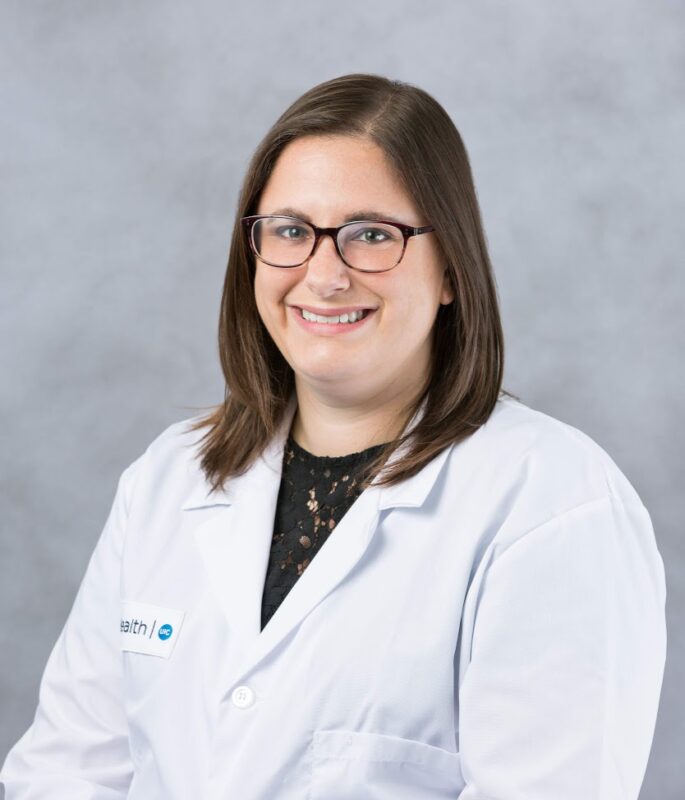
Dr. Kelsie Avants DO is an Assistant Professor in Internal Medicine and Pediatrics and is the Associate Program Director for the Med-Peds residency program. She went to medical school at Midwestern University’s Chicago College of Osteopathic Medicine and completed her Med-Peds Residency followed by a pediatric chief residency here at UI Health. She works in both the inpatient and outpatient settings and is currently serving as Medical Director of the Pilsen COVID Evaluation Clinic. She has interests in global health, refugee and migrant health, medical education, and preventative medicine. She loves spending time with her dog Roxy, exploring the world and trying new restaurants when it is safe to do so, and making lop-sided pots in ceramics class.
Dr. Anna (Ania) Lipowska

Dr. Anna (Ania) Lipowska is an assistant professor in the Department of Medicine’s Division of Gastroenterology and Hepatology. She graduated with a Bachelor of Music in violin performance as well as a degree in sociology from Vanderbilt University in Nashville, TN. She went on to earn her medical degree from Emory University School of Medicine in Atlanta, GA. Dr. Lipowska completed internal medicine residency training at Northwestern University in Chicago and gastroenterology fellowship at the University of Chicago. She is double board-certified in internal medicine and gastroenterology and works in both the inpatient and outpatient settings. Her clinical and research interests include esophageal disorders, endoscopic ergonomics and educational curriculum development.
Dr. Emily Graber
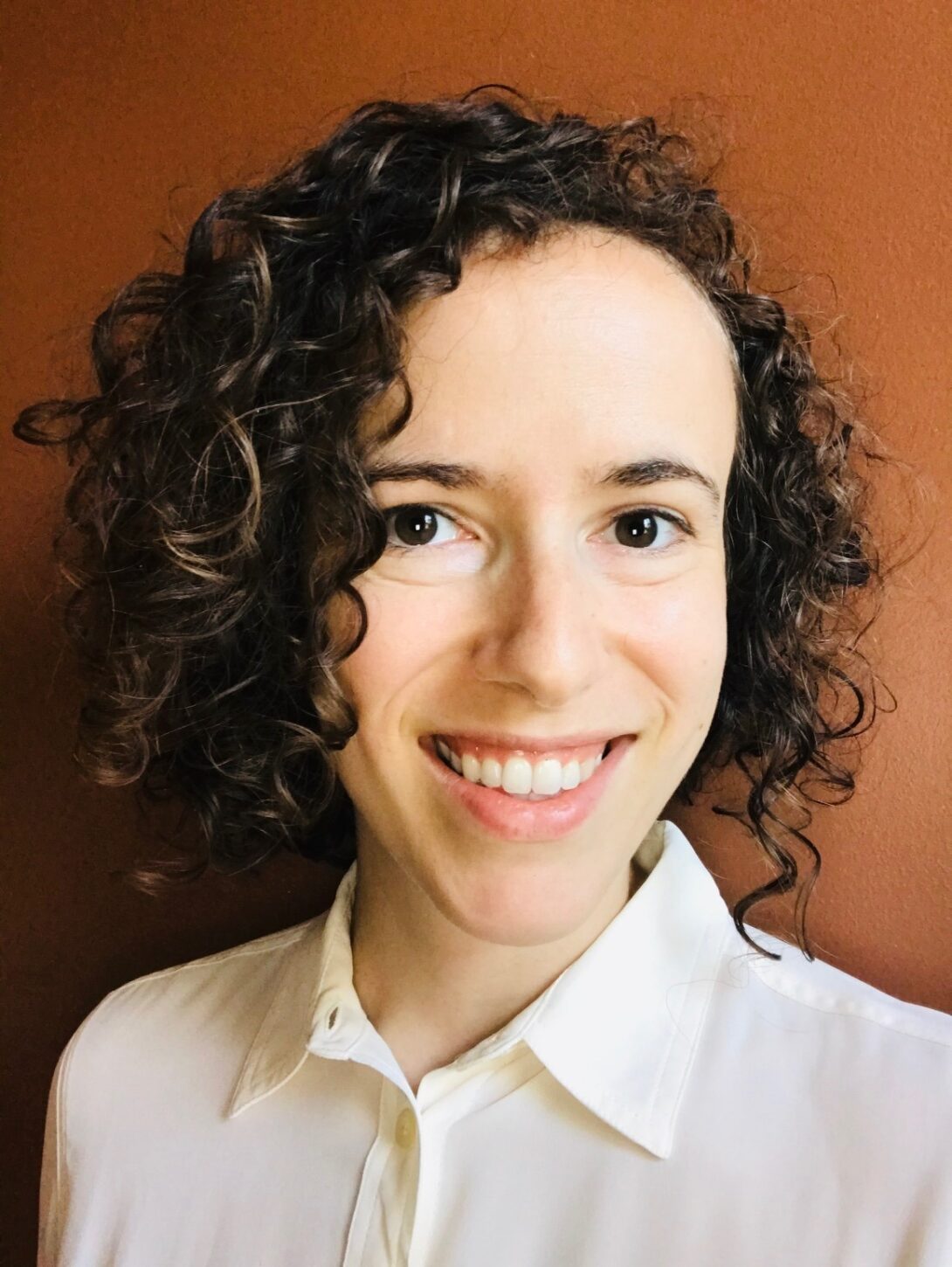
Dr. Emily Graber is an Assistant Professor of Clinical Family Medicine. Originally from Ohio, she came to Chicago for college at the University of Chicago, and came to UIC for medical school and beyond. After completing Family Medicine residency, she completed an Academic Career Fellowship and since then has been working as an attending at the Pilsen Family Health Center. She loves providing primary as well as inpatient care for all ages, with special interests in full-spectrum reproductive (LGBTQ+ inclusive) healthcare, nutrition and lifestyle’s role in chronic disease, and Point of Care Ultrasound. When she’s not at work, you’ll find her on her bike, doing yoga, or growing her own food (and then, of course, cooking and eating it).
-
Dr. Nicole Thompson

Dr. Nicole C. P. Thompson, MD, FAAP, is an Associate Professor of Clinical Anesthesiology in the Department of Anesthesiology at the University of Illinois Health Science System. She is a graduate of Xavier University of Louisiana and Loyola University Stritch School of Medicine. Dr. Thompson completed residency at Rush University Medical Center and fellowship at University of Illinois Hospital & Health Sciences System. She is board certified in Anesthesiology and Pediatric Anesthesiology. Her clinical and academic interests are in difficult airway management and in global health. In addition to her duties at the University of Illinois, Dr. Thompson also provides care for patients at Shriners Hospital for Children Chicago. Dr. Thompson is a fellow of the American Academy Pediatrics and is the immediate past chair for the Academic Section on Anesthesiology within the National Medical Association. She is married and the mother of one boy, three girls, and one dog.
Dr. Priyanka Gokhale

Dr. Priyanka Gokhale is an Assistant Professor of Obstetrics and Gynecology. She is originally from Maryland but has called Chicago home since moving to the city for residency. She completed her training at Northwestern and joined the faculty at UIC shortly thereafter. Dr. Gokhale is committed to medical education and looks forward to working closely with students in her new role as a physician house advisor.
-
Dr. Bernice Man

Dr. Bernice Man is a general internist and faculty member in the Division of Academic Internal Medicine. She has been at UIC since 2008 and has spent much of her career devoted to serving urban vulnerable populations. Most recently, she completed a masters degree in clinical translational science at the UIC School of Public Health. She is originally from New York City and still considers herself a New Yorker. It was quite a surprise to her friends, family and even herself when she moved to the west coast for medical school and residency. Although the first year was rough, it was one of her best life decisions. What inspired her to go into medicine (30!) years ago is still what inspires her work today. It’s the patients. She’s thrilled to be a house advisor and feels this is the perfect trifecta in her work as a physician, researcher and advisor. Her 3 daughters are her greatest accomplishments, 2 are in college, and the other 1 is in high school. She enjoys the outdoors, cooking and running with her dog.
Dr. Erin Hickey
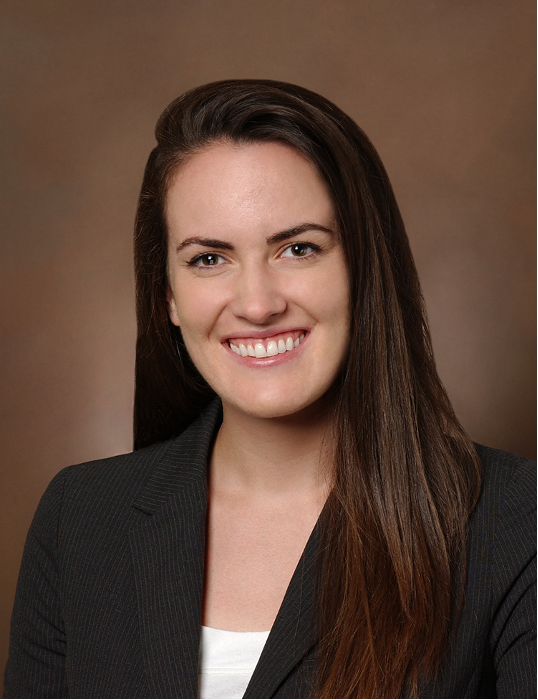
Dr. Erin Hickey is an Internal Medicine and Pediatric (Med-Peds) trained doctor in the division of Academic Internal Medicine. She is from Cincinnati, Ohio and moved to Chicago for college, came back for residency, and joined UIC after residency for a medical education fellowship. She is very excited to stay at UIC after joining as faculty in 2021. Her medical interests are in the primary care of children and adults with intellectual and developmental disabilities, medical education for trainees at all levels, and the treatment of opiate use disorder. Outside of medicine, she enjoys all activities outdoors, especially those she can share with her dog Cooper, and spending as much time as possible with family and friends. She is committed to the well-being and advancement of medical students and is delighted to join the PHA family!
-
Dr. Sean McCann
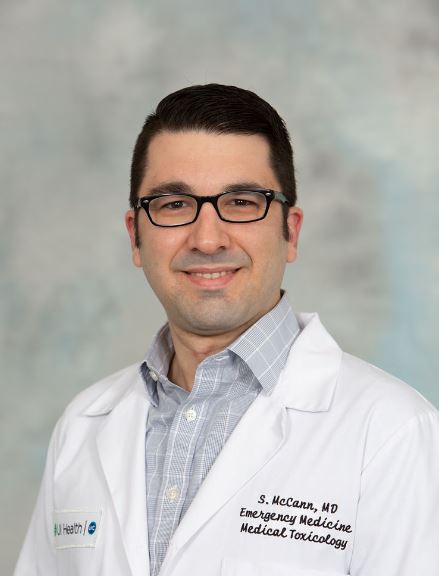
Sean McCann is an Assistant Professor on Emergency Medicine and Medical Toxicology at the University of Illinois at Chicago. He grew up in central Maryland where he spent his free time hiking, kayaking, fishing, and skiing. He moved to Pittsburgh for college where he obtained a BS in Neuroscience at the University of Pittsburgh then completed medical school at the University of Pittsburgh School of Medicine in 2015. He moved to Chicago for residency in Emergency Medicine at Resurrection Medical Center, then came to UIC in 2018 for Medical Toxicology Fellowship. Dr. McCann has been full-time faculty in the Department of Emergency Medicine and Medical Toxicology since completing fellowship in 2020. He works clinically in the Emergency Department, on the inpatient Medical Toxicology Service, and runs the outpatient Medical Toxicology Clinic. He also serves as faculty for the Toxikon Consortium, a collaboration between UIC, Cook County Health, and the Illinois Poison Center where residents and students from across the city and region rotate for clinical education in Medical Toxicology. His academic and research interests focus on lead toxicity, particularly the effects of chronic low-level lead exposure and the burden of lead toxicity on disadvantaged and underserved populations. He spends his free time enjoying Chicago with his family, travelling and woodworking.
Dr. Leelach Rothschild
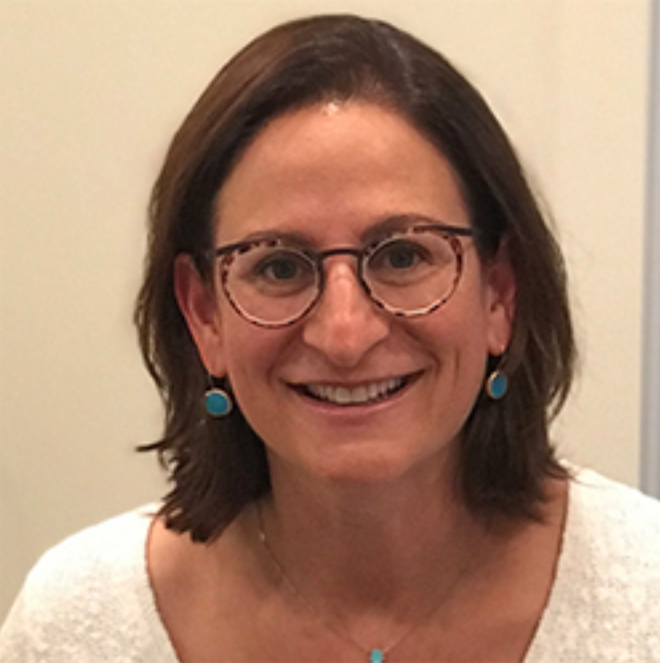
Dr. Leelach Rothschild, MD is an Associate Professor of Anesthesiology at University of Illinois at UIH and splits her time between Shriners Hospital for Children in Chicago and UIH. She grew up in the north suburbs of Chicago and went out east for college where she obtained a BA in Spanish Literature; she developed a fondness for traveling to other countries and learning about other cultures. Upon her return to Chicago, she worked in a Surgical Oncology Lab at UIC and maintained her connection to Spanish through her volunteer work in Pilsen. She went on to receive her MD from the University of Illinois and continued there with her training, completing a residency in Anesthesiology and then fellowship in Pediatric Anesthesiology. She has been a proud lifer at UIH since 2007! (but technically 1997 when she stepped foot into the lab). She is involved in many hospital and department projects, but particularly enjoys supporting residents and department wellness initiatives; she also serves on the Wellness Committee for the American Society of Anesthesiologists. When she is not busy at work, she finds joy spending time with her family, walking and playing with her dog, and when circumstances allow, traveling the globe.
-
Dr. Leah Finkel
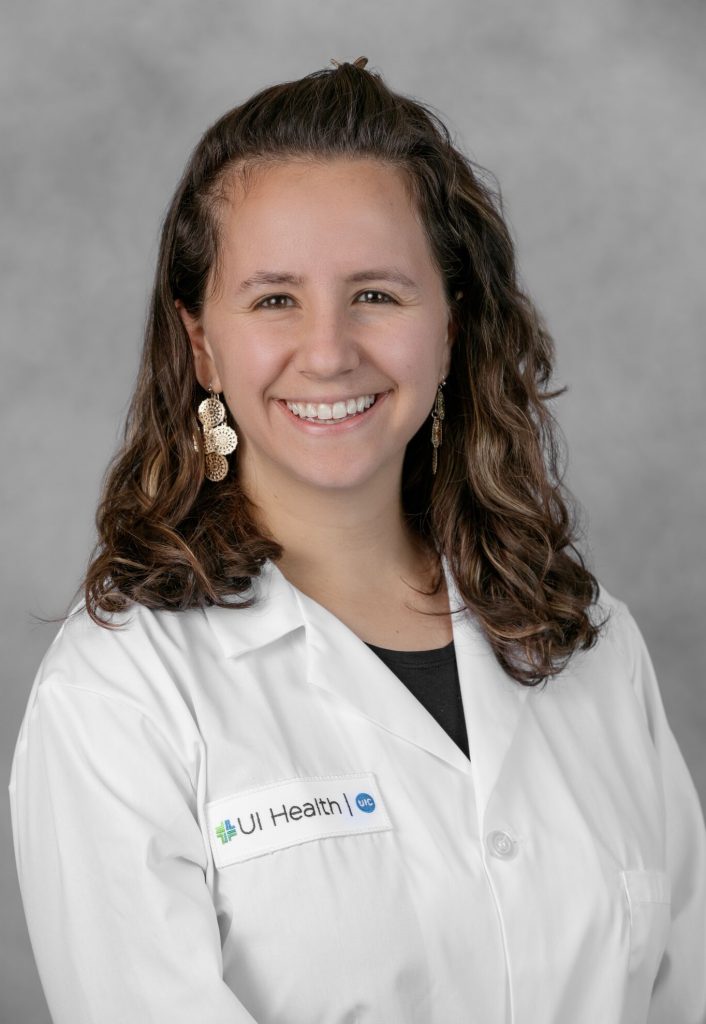
Dr. Leah Finkel, MD is an assistant professor in pediatric emergency medicine and the Director of Pediatrics in the department of Emergency Medicine at UIH. She received her MD from University of Illinois and completed her post graduate training at the University of Chicago for her pediatric residency and pediatric emergency medicine fellowship. She later completed an ultrasound fellowship at UIC. She is passionate in discovering novel uses for POCUS with her pediatric patients in the emergency department and medical student and resident education. She and her husband have 4 kids that keep them quite busy and entertained outside of work. She loves finding new places to explore both locally and around the world.
Dr. Matt Witthaus

Dr. Matt Witthaus completed medical school at the University of Missouri, residency in family medicine at Saint Louis University, and a fellowship in academic family medicine at Saint Louis University. He has been on faculty at UIC since 2018, and his clinical interests include LGBTQ health, including gender affirming care, as well as behavioral health and chronic disease management. Outside of work, he and his husband enjoy traveling, soaking in the arts, and spending time with friends and family.